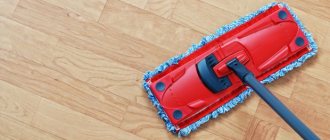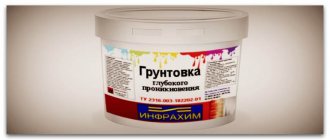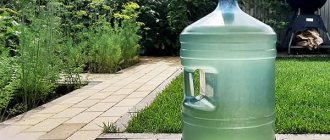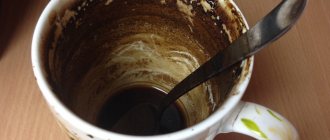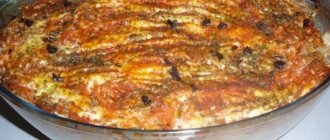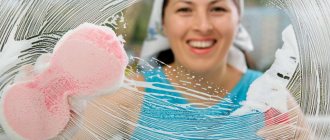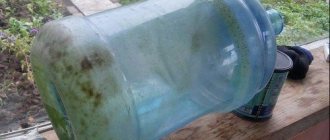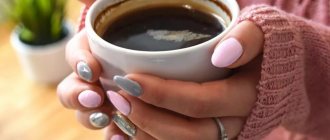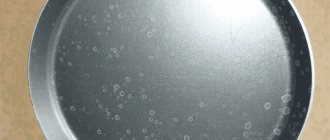A bottle or vase with a narrow neck just doesn’t want to be washed, even though you’ve already tried a dozen different methods? Then this is the place for you. We will offer a dozen more options. Perhaps among them there will be one that will help cope with this problem.
We tried to select for you a wide variety of recipes to combat old stains on the bottom of glass bottles. For opponents of any “chemistry”, here are options with absolutely safe ingredients. For those who are not afraid to use acids and alkalis, there are stronger and more effective methods. Choose the one you like best.
Important points of the process
Cleaning a wine container will go faster and won’t cause much trouble if you adhere to the following rules:
- Initially, the product must be soaked in warm water. If there is such an opportunity, then it is better not to just fill the bottle, but to place it in warm water, then the sediment will fall off faster.
- After each cleaning option (if it does not give an ideal result), the item should be dried before repeating the approach or trying something new. Alternating chemical exposure with the use of clean water and dry air will destroy even the most stubborn sediment.
- When trying to remove plaque from inside the bottle, one must not neglect the law of universal gravitation. If you turn the bottle over so that the problem area is on top, it will gradually crumble under its own weight. However, given the size of the item, this is not so easy to do.
Tip: Glass is not plastic, it practically does not retain aromas. Often the cause of an unpleasant odor that seems to be coming from the container is an old or damaged lid. You shouldn’t try to wash or disinfect it, it’s better to just replace it.
- Even though the glass used in wine bottles is very thick, it is not that difficult to break. When cleaning, do not use coarse sand, pebbles, or small stones. They really effectively break up dense sediment, but can leave scratches on the inner surface of the product, which in the future will lead to a decrease in the strength of the material.
If the bottle has not been cleaned for so long that its internal surfaces are covered with mold, then cleaning products alone will not be enough. You will have to use disinfectants or professional sterilization methods.
Simple cleaning methods
1. Place the bottle in warm water, and also pour warm water inside. In this case, the sediment will fall away faster, all that remains is to drain it. 2. If just soaking doesn't work, start adding dish soap. Alternating chemical exposure with rinsing with warm water is good for cleaning. 3. When removing plaque from the inside, you can turn the bottle over. The sediment will fall off under its own weight. But sometimes this is not entirely convenient if the glassware is huge and there is not much space.
If the bottle is braided, it is easier to turn it over when removing sediment.
By following these simple rules, you can safely begin cleaning the container. But how and how can you wash a narrow-necked bottle if regular water doesn’t do the job? What available means can you use to wash it for sure? Over the long history of making homemade wine, many ways have been invented to clean hard-to-reach containers.
Special devices for removing plaque
4. Brush. A good old and indispensable item for washing any bottles. It copes well with hard-to-reach places and narrow necks. But in the case when the bottle is 19-20 liters, you should take a brush with a long handle and a more fluffy, dense and voluminous washing part. 5. Water jet. That's also a good way. It’s good if there is a hose that fits into the neck, it can be directed towards the dirt. Under the pressure of the jet, the dirt falls away. 6. Fresh dirt can be easily washed off with dishwashing detergent. Just pour it in there and shake it well. It cleanses fresh dirt well, but most likely will not cope with old dirt. In this case, you will have to settle the mixture. 7. Cleaning up wine residues with baking soda. It will not give results on its own, but if you use the same brush, the result will appear. 8. Vinegar. An excellent method for significant stains, but it takes a lot of time. With the help of vinegar, sediment is removed very well and the container is completely disinfected. But in order for the pungent odor to disappear after such cleaning, it is necessary to ventilate the bottle for a long time. If you have it, then this method is for you. 9. Sand. Some people pour sand baked into a baking tray and pour water into it, shaking the bottle well. As a result, the precipitate disappears. The main thing is that the sand is fine and does not destroy the crystal surface of the bottle.
Simple but effective methods
In cases where the contamination is very fresh or is not excessively dense, you can try cleaning a container with a narrow neck using one of the following methods:
- Ershik. It is clear that this can only be a special device with a very long handle and fluffy dense pile. It passes through the neck of the product without any problems and allows you to wipe off even the most stubborn stains.
- Jet pressure. If you have a watering hose at your disposal, then by adjusting the intensity of the water supply you can again thoroughly clean the insides of the bottle.
- Detergents. Fresh stains can be easily washed off with the most common dishwashing detergents. The main thing is not just to pour the product into the container, but also to shake it thoroughly so that the effect affects all dirty areas.
- Soda. Simply pouring baking soda into a bottle of water will have virtually no effect. The composition will slightly soften the sediment, but will not get rid of it completely. This approach must be combined with mechanical action, for example, working with a brush or sponge on a holder.
- Vinegar. This product will not only dissolve sediment, plaque or scale, making it easier to remove, but will also disinfect the container. True, you need to resort to this approach only if time is not pressing and the product can be aired in the fresh air for a long time after cleaning, otherwise traces of a pungent odor will remain for some time.
- Fine sand. First, pour in fine sand, calcined on a baking sheet, then pour in water. If you vigorously shake the container, it will clean itself perfectly. The main thing is to make sure after this that all the sand has been washed away.
Some owners try to clean the bottle with buckwheat, but in practice this method is not as good as it seems. The food component softens under the influence of moisture, causing its particles to peel off and stick to the glass. They can be almost invisible until they begin to rot and spoil the taste and aroma of the drink stored in the container.
Take advantage of the secret remedy
Surprisingly, many simple products can be used for unusual purposes.
In our case we are talking about ordinary rice. It can be used to perfectly clean the narrow neck of any glass bottle, just follow a few simple steps:
- Step one - pour hot water into the bottle, filling it about a third of the way.
- Step two - pour a handful of rice inside.
- Step Three – Add two teaspoons of baking soda to the mixture.
- Step four - cork the bottle. If you lose the lid, you can simply plug the neck with your hand.
- Step five - shake the bottle vigorously for a couple of minutes.
- Step five - empty the bottle of its contents and rinse it well in hot water.
As a result, your bottle will be crystal clean, as the rice will carefully remove food residues from its walls. The soda, in turn, will disinfect the dishes and remove the smell.
This method is very easy to implement. It will not require much expense, effort or time from you. In addition, you can feel like a real bartender preparing an original cocktail for a guest.
Non-standard methods
In addition to the above popular ways to wash containers, there are also non-standard ones.
You can clean it with newspaper or cloth. The newspaper is torn into small pieces, thrown inside, filling about a quarter of the space, then water is poured. Wait for the paper to swell with liquid. Now you need to rotate and shake the bottle, trying to clean all areas of contamination. With fabric it's a little different. First, they collect water, and clean water is diluted with a liter of river or swamp water. After this, they wait until the liquid blooms, and then they insert a piece of fabric inside . They begin to drain the water, constantly straightening the piece of fabric along the walls. After this, gently pull the tip of the material. It turns out that she wipes all the walls. All that remains is to rinse thoroughly several times with clean water.
Unusual approaches and their features
In addition to the listed approaches, there are a couple more methods that can remove dirt even from a container that has stood uncleaned for several months.
- Newspapers. Finely tear the newspaper paper and push it through the neck of the bottle. It needs to be filled about a quarter full. Then pour three liters of clean water into the container and wait for the paper to swell. Then we begin to make intense shaking movements in all directions to clean all areas of the glass.
- Textile. A similar method, but first we fill the bottle with clean water diluted with a liter of river or swamp liquid. We leave the container for several days until it “blooms”. Then we insert unnecessary thin fabric through the hole. When it gets wet, we begin to drain the liquid, while straightening the material (with some kind of stick) so that it sticks to the walls of the container. After this, slowly pull the cut, wiping the inside of the bottle. We rinse the container several times.
Before using a clean bottle, it is recommended to dry and seal it. After 3-5 days (if possible, it is better to wait a couple of weeks), open the container and check whether there is an unpleasant odor coming from it, or whether traces of dirt have appeared on the walls on the inside. If anything raises suspicions, we repeat the cleaning from the very beginning, after which we carry out a check again.
How to clean a glass bottle with a narrow neck from wine
Most often, such containers have a large volume, so washing them is quite difficult due to their non-standard dimensions. To avoid any difficulties during cleaning, follow certain rules:
- Fill the bottle with water, so the dirt will fall off more easily and it will be easier to clean the surface;
- it’s good if you alternate chemical methods with washing the inner surface with warm water;
- for better results, turn the container upside down (if dimensions allow), so the plaque will fall off under its own weight;
- if the unpleasant smell remains, perhaps it is not the walls that smell, but the bottle cap, try replacing it with a new one;
- Do not experiment with large pebbles as an abrasive, as they may break the container.
Features of cleaning a cooler bottle
It is important to understand that you need to clean not only the bottle, but also all parts of the cooler that come into contact with water. Read this entire article on how to clean a water cooler.
If only the water container needs washing, you can clean it using:
- citric acid;
- soda;
- vinegar;
- salt with dish gel.
The cleaning process is no different from the procedure for washing glass and other containers. The main thing is to rinse the container thoroughly and be sure to dry it completely. If there is heavy contamination, first fill the bottle with warm water.
How to clean a glass bottle from vegetable oil
Oil does not interact well with water, so for cleaning, choose substances that dissolve fatty compounds well.
Mustard
For the procedure you will need mustard powder and warm water.
Procedure:
- Dilute mustard in water at the rate of 2 tbsp. spoons of powder per 1 liter of liquid.
- Mix the mixture thoroughly so that there are no lumps.
- Pour the substance into the bottle and leave for 2-3 hours.
- Drain the detergent and rinse the container with running water.
If you do not achieve the desired result, repeat the procedure.
Flour
Flour absorbs liquid well, so it will perfectly clean the inner walls of the container. You will also need a handful of rice for the procedure.
Progress:
- Fill the bottle with water.
- Add flour to obtain a white liquid.
- Soak the container upside down for 1-2 hours.
- Add rice to the mixture.
- Shake thoroughly and drain the contents.
- Rinse the container with clean water.
Boiling
The method is suitable if you have a pan of suitable size in your arsenal. The advantage of this method is that you can immediately clean as many containers as will fit in the pan. Place containers in it and fill it to the top with water. Add a little laundry soap or dishwashing liquid. Place the pan on the stove and simmer the bottles for half an hour. Cool the container and then rinse with clean water.
How to properly clean mechanically
Probably, almost every person in his life has at least once washed a container that has a green residue. But how should cleaning be carried out correctly without harming your own health?
The most common reason that greens appear in this kind of container is the so-called chlorella algae, which, in principle, is not capable of causing much harm to the body. But everyone wants to store water in a normal container. For this reason, most housewives are wondering how to clean a container of greens without resorting to harmful agents.
The following simple methods will help you cope with the presence of algae in plastic bottles:
- Baking soda, available in every home, perfectly cleans any container. You need to pour soda into the bottle and leave it for literally a few hours. In this case, the calculation should be as follows - for every twenty liters you will need about half a pack. You will need to add some water to the container. Then you will need a clean cloth, after which you need to shake the bottle for ten minutes. After performing this procedure, it is necessary to rinse the remaining product with running water.
- To clean a plastic bottle, you can use a regular chain, which should be thrown into the container and filled with it. Then shake the container and rinse.
- We wash off deposits on the container with ordinary millet, the amount being calculated as half a kilogram per twenty-five liters. It should be poured into a container and filled with water, after which it should be shaken for ten minutes. You can also use liquid soap to clean bottles.
- The folk method also includes the use of ordinary newspapers, which should first be torn and crumpled. After this is done, the lumps must be placed in the neck and filled with clean water. Then you should shake the bottle and turn it for five minutes.
The methods listed above, as a rule, allow you to immediately clean plastic bottles, but if the housewife is alarmed by these manipulations, then you can use herbs.
What preparations will help to wash a glass jar and will not cause harm to health?
If the previous methods did not help, it’s time to use the heavy artillery – chemicals. Chemists approach even such a task as laundering a bottle reasonably. First, they try to find out the origin of the stains, and then, depending on this, they select a remedy.
How to remove old water stains
You have a vase in which you often put flowers. After some time, did you find that its bottom became faded, some kind of whitish-gray? These are salts that remain after water evaporates. How to get rid of them? Acid will come to the rescue.
Every housewife has citric or acetic acid in her kitchen. Pour citric acid into a vase, add water and shake until the acid granules dissolve. Leave for a while (overnight is possible) so that the acid reacts with the salts. Then thoroughly wash the container with dish soap.
Citric acid can be replaced with acetic acid, only in this case you will have to close the neck so that the smell does not spread throughout the room.
The more concentrated the acid solution, the easier it will be to get rid of stains. The almighty Coca-Cola can also help with water stains. It contains orthophosphoric acid. For this reason, the American drink has an acidic environment and acts like vinegar or lemon juice. Pour Coca-Cola into the bottle and leave for several hours.
How to wash a bottle from old grease or milk stains
In this situation, chemists advise resorting to alkali, because it has the property of dissolving fats. We will use baking soda.
Pour soda ash into a bottle and add a small amount of warm water to dissolve it. Leave for a while so that the lye can break down the fats. Discard the dirty solution and wash the container with dish soap.
Soda ash can be replaced with baking soda, but you will need a lot more of it because it is not as strong: soda ash has a pH of 11, while baking soda has a pH of 7.5-8.
Lye is also included in pipe cleaners. Take any similar remedy, for example “Mole,” pour it into a bottle and forget about it for a while. Further steps are similar: pour out, wash with soapy water and rinse.
What to do if the origin of the stains is unknown
If all the previous methods did not help or you do not know what caused the stains, then try using bleach, better known as bleach.
Pour bleach into a bottle and pour cold water into it. Leave it for a while, then pour it out and rinse thoroughly with dishwashing detergent. Glass is a material that does not absorb anything (which is why in chemical laboratories all the glassware is made of glass). After rinsing, your bottle or vase will be completely safe again.
As you can see, there are many ways to help get rid of old stains on the bottom of a glass container.
What you will need
To clean quickly, safely and effectively, you will need a number of tools.
Several rugs
Rugs are useful for storing collapsible parts. In this case, not a single part will be lost, and the structure will be assembled correctly.
Cotton pads and gauze balls
It is convenient to care for the mouse using gauze balls or cotton pads. They are soaked in an alcohol solution and the surface is wiped.
Wet wipes
Special alcohol-based wet wipes will help you carefully care for the mouse body. Conventional wet wipes contain chemical components that can harm equipment:
- Miraclean universal viscose-based wet wipes are suitable for cleaning the entire surface of your computer. The composition has antistatic properties. It has a pleasant smell.
- Wet wipes BURO BU-Zsurface made of non-woven material. They are based on viscose and polyesters. Impregnation of napkins protects the surface from dirt for a long time, as it has antistatic properties.
Napkins must have a smooth, soft structure. There should be no long fibers.
Special fluids
Computer cleaning products will help you quickly get rid of dirt. Most solutions contain components that not only clean, but also disinfect the surface:
- Defender CLN gently cleans the surface without damaging it. There are no abrasive components in the composition.
- ProfiLine Screen Clean spray helps keep office equipment clean. The product is sprayed onto a dirty surface and then wiped with a napkin. The product easily copes with greasy stains, old marks and stains.
Ethyl alcohol or alcohol solution of "Chlorhexidine"
To better clean the surface of the mouse and disinfect it, use ethyl alcohol. Chlorhexidine solution has a more gentle effect. A small amount of the solution is applied to a napkin and wiped the surface.
crosshead screwdriver
If a lot of dirt has accumulated and you need to disassemble the device, you cannot do without a Phillips screwdriver. Using a screwdriver, it is easy to open the top part of the manipulator.
Small plastic scraper
It takes a lot of effort to remove dried, decades-old dirt. A plastic scraper comes to the rescue. Its size is small, so it can easily remove dirt of any complexity.
Soft dry wipes
After all procedures, you need to wipe the device dry. It is best to use special soft dry wipes.
Lens or magnifying glass
To achieve maximum cleanliness, use a magnifying glass or magnifying glass. With the help of these objects you will be able to see all the particles of dirt.
Magnet method
Owners of a pair of strong (neodymium) magnets can make a super device for washing eggplants. To do this you need:
- Cut a piece of sponge (such that it fits into the narrow neck).
- Make a cut approximately in the center.
- Place a magnet inside the sponge.
- Seal the hole.
Ready. Now you can safely wash any bottles (including large ones) by moving the second magnet from the outside.
How often should water bottles be washed?
At least once every 2–3 months. In addition, it is recommended to wash eggplants that have been empty (not used) for some time.
How to prevent the formation of greenery?
Choose high-quality purified water. Do not touch the neck of the bottle with unwashed hands. Do not store water containers in direct sunlight.
Do 19-liter eggplants have an expiration date?
If the operating rules are followed, polycarbonate 19-liter bottles can last up to 10 years. Cloudiness of the plastic, cracks, and an unpleasant odor indicate that it is time to throw away the bottle. On average, they last 40–60 filling and emptying cycles.
Our health depends on the purity of drinking water. Many people carefully study the composition of purchased water, are interested in the depth of the well and the purification methods of the manufacturers. But it is important to pay attention to other points - proper storage and cleaning of eggplants. Even very healthy mineralized water in a vessel covered with greenery will become harmful and dangerous. At a minimum, its use threatens intestinal upset. A bottle with deposits must be washed. Fortunately, there are a lot of ways. And they are all fast and easy!
Non-standard ways to clean a bottle
If classic cleaning methods do not help, you can use non-standard methods for cleaning large containers with a narrow neck.
Newspaper or cloth
To clean, you will need scrap newspaper, baking soda and water.
- First, mix baking soda and water until you get a thick paste.
- Tear the newspaper into small pieces and pour it into the bottle.
- Add the soda mixture and shake the container thoroughly.
- Leave the cleaning agent inside for a while to work.
- Shake the container again.
- Drain the remaining liquid with newspaper and rinse the bottle with running water.
You can clean the bottle with a cloth if you can get river or swamp water nearby. This is necessary so that the liquid inside the bottle blooms and contaminants are easily removed. Dilute clean swamp water, pour into a container and wait until it blooms. After this, place a piece of fabric in the container.
Nettle
In field conditions, nettle leaves can be used as an abrasive.
Regular rice scrapes dirt off the walls well. To remove not only dirt, but also to disinfect the bottle, the procedure will require soda.
- Fill the container 1/3 full with hot water.
- Add a few handfuls of rice.
- Add 3 tbsp there. spoons of soda.
- Close the container and shake the contents thoroughly until the dirt comes off.
- At the last stage, rinse the bottle with clean water.
So, let’s start a home “bath day” for your device! We recommend cleaning the cooler before replacing the old water bottle with a new one. Make sure you have enough free time to complete the entire cleaning cycle.
How I found my ideal hair growth product
Hello dear! I want to share with you my solution to the sensitive problem of hair loss . The problems are very serious, at least for me. I would never have thought that this misfortune would touch me, especially at the age of 29 (read more...)
Step 1. Turn off the water heating and cooling switches (usually they are located on the side or back panel of the device). Unplug the cooler and let the water in the heating tank cool down to avoid getting burned in the future. At the same time, we recommend covering the floor with film or a rug to protect it from water. Remove the bottle. Prepare a place where you will store all the parts removed from the cooler that will later need to be washed.
How to store water
When using tap water, although we very rarely use it for drinking, it is possible only for washing dishes and laundry, but with the advent of various types of filters, this task has become easier, although everyone knows that when water is supplied from the city water supply, it is already undergoes filtration, where in addition to harmful substances, useful ones are also lost, but urbanization cannot exist any other way.
Otherwise, it is impossible to provide people with water in cities, through high filtration, through treatment plants, losing everything along the way. Despite any filtration, the water will still contain living substances, such as beneficial micro and macroelements, as well as bacteria and mycelium, which in normal composition maintain health and support the rhythm of life to which we are accustomed.
I am more interested in collecting it from spring sources, in villages, and more, so that at home there is always clean and spring water. Although manufacturers of various containers recommend storing water in plastic bottles, it is not for nothing that spring water was stored in earthenware containers for longer storage and disinfection. There, water can even be stored for up to 3 years without losing its beneficial properties, it turns out!
When plastic bottles are used, it is recommended to pay attention to the marking of the production designation, PET (E) - polyethylene rephthalate , this is the designation that indicates the food suitability of the container. Those marked PVC are considered toxic containers and are only suitable for storing chemicals.
Thus, having paid attention to the dishes, what brand they were and whether they were suitable for use, it was decided to look into their storage condition. Looking at my home plastic cylinders in which I store clean drinking water, I saw a green coating with a hint of mold color along the edges in the folds and bends inside the container, so we quickly decided to look for information on the Internet.
Here it became clear that it is true, due to the constant presence of containers in a humid environment and the lack of disinfection, a dark green coating – mold – forms around the ring-shaped bends, well, let’s say they form.
Before this, it didn’t really occur to me that dishes need to be cleaned not only for storing any liquids and not just rinsed with running water, but specifically to keep them clean all year round, also for drinking water, especially spring water.
Use of chemicals
After cleaning with aggressive chemicals, the dishes should never be used for drinking water. The water in it will only be suitable for technical consumption. You can clean a plastic bottle from green deposits like this:
- A five percent solution of hydrochloric acid is poured into the dishes and rinsed for a short time. The lid must be screwed on tightly. Next, pour out the solution and rinse the dishes thoroughly under running water.
- Pipe cleaner is poured or poured into the container and topped up with water. After 20-30 minutes, you can pour out the contents and wash the dishes.
How to mechanically clean a canister from green residue after water
A plastic bottle or canister is very convenient to use: they are light in weight and have a convenient design, making them quite easy to use. However, sometimes green deposits or mold appear at the bottom of the containers. This makes plastic containers unsuitable for drinking water.
The cause of green growth is the algae chlorella, which grows in conditions of high humidity. It also provokes the appearance of a musty, unpleasant odor, especially if the container has been stored closed for years
Soda
To get rid of greens, algae and other contaminants, use a simple cleaning method:
- Pour baking soda into a canister (approximately 250-300 g per 20 liters) and add a little liquid.
- Leave for several hours.
- Throw a cloth into the container and vigorously shake the canister for 10 minutes.
- Rinse the bottle thoroughly until all remaining soda and contaminants are removed.
other methods
You can wash a plastic canister using other methods:
- Pour wheat grain, beans or millet into a container and add a little water. Shake the bottle vigorously and then rinse well. To enhance the effect, you can add a little liquid soap.
- Throw a few metal dish brushes into the bottom. Add detergent and some water. Shake the bottle vigorously and then wash it.
- Pour some dish soap into the canister and add a couple of tablespoons of coarse sea salt. If necessary, add a little water. Shake the canister vigorously for 5 minutes until the surface is completely clean. Leave the container with detergent inside for 10-30 minutes, and then wash and dry well.
Sea salt is a natural and safe abrasive that will not only remove all dirt from the most difficult corners, but also have a bactericidal effect
Use of beans
The grains are removed from the walls of the new growth and their removal is facilitated.
Bean grains are poured into a bottle up to 150-200 g. After adding 1 liter of water, the mixture is shaken until a green solution is formed. After cleaning, rinse the bottle with clean water and dry it. An alternative remedy is millet or another type of grain. To prevent re-contamination, the dishes are covered with a tight lid and hidden in a dark place.
Traditional methods
Green plaque is a problem not only for plastic containers, but also for glass ones.
Mothers and grandmothers solved the problem of how to wash greens from a bottle using improvised means.
They used simple and cheap methods:
- The most common method is using a special brush and soda.
- Add a little dishwashing liquid or soapy water and crushed egg shells to the bottle. The lid must be closed and the liquid in the bottle must be shaken until a positive result is obtained. Then the detergent is poured out and the dishes are rinsed with clean water. In some cases, the procedure must be repeated.
- Fill the dirty dishes one-third full with water, add baking soda at the rate of half a pack per 25 liters of water. Place a piece of synthetic fabric such as nylon into the bottle and shake vigorously. To make it easier to get the fabric, you can hold it at the neck.
- Finely tear the newspaper and place it in a bowl, add a little water just to wet the paper, and shake vigorously. The method is not the most convenient, since it is then quite difficult to wash the paper out of the bottle.
- You can use clean (calcined) sand, sawdust with the addition of liquid soap, preferably laundry soap. This method may also not be to everyone’s taste due to the difficulty of washing.
- You can wash the inside of a plastic bottle with a foam sponge. To do this, tie the sponge in the middle with a long rope and push it into a container using a thin stick, add 100-200 grams of baking soda. Then you can add water and shake the bottle vigorously.
- To clean the container you will need dishwashing gel and coarse sea salt. To wash a five-liter bottle, you need to prepare a solution at the rate of 1 glass of warm water, 1 tablespoon of gel, and 2-3 tablespoons of salt. Pour the finished product into a bottle and leave to soak for an hour. Next, you need to vigorously shake the bottle and rinse it. Usually everything can be cleaned the first time, but sometimes you have to repeat the procedure. Salt acts as a soft abrasive that does not damage the walls of the cookware. What is attractive about this method is the availability of available materials and their low cost.
- A simple metal chain can be used to clean green deposits from the bottle. Filled with a small amount of water and shaken well, the chain acts as an abrasive. Its links are smooth, so they do not leave scratches.
- Beans, peas, and millet will help defeat greens. To do this, pour 100-200 grams of legumes or half a kilo of cereal into a contaminated bottle, fill it with four glasses of water and shake for 5-10 minutes. Usually after this procedure the liquid becomes green and dirty, and the dishes become clean and transparent.
- You can wash greens in a plastic bottle with dry mustard. Three tablespoons are enough for a five-liter container. First you need to shake the bottle, and then add water and shake with it. If the contamination is very strong, you should leave it to soak for a while and then wash it clean.
- Dry pharmacy nettle is also used for cleaning bottles. A handful of grass is poured into the bowl and two glasses of water are added. Then you need to shake the bottle vigorously. You can enhance the effectiveness of the product with the help of another component - river sand. You can replace nettle with dry yarrow. This herb has a disinfecting effect, so it also fights harmful bacteria. Fresh nettle is no less effective. This “washcloth” is good to use on hikes or at the dacha. The crushed leaves and stems are placed in a bottle, a glass or two of water is added and then you need to proceed as in the other methods described.
Use of chemicals
After cleaning with aggressive chemicals, the dishes should never be used for drinking water. The water in it will only be suitable for technical consumption. You can clean a plastic bottle from green deposits like this:
- A five percent solution of hydrochloric acid is poured into the dishes and rinsed for a short time. The lid must be screwed on tightly. Next, pour out the solution and rinse the dishes thoroughly under running water.
- Pipe cleaner is poured or poured into the container and topped up with water. After 20-30 minutes, you can pour out the contents and wash the dishes.
These methods are also suitable for washing glassware. Unlike plastic, it can be used to store drinking water, but first you need to rinse it for a long time.
Please remember that not all plastic utensils are recyclable. It is necessary to pay attention to the instructions, composition of the material and expiration date.
Cleaning with cola and citric acid
Cola has long been known as an excellent cleaner and detergent, and in combination with citric acid it can clean even very old dirt, and most importantly - without any chemicals. In a plastic container with a volume of 20 liters, you need to pour 1.5–2 liters of carbonated drink and add 15–20 g of citric acid. In no case should you close the vessel, as during the reaction the cola will foam and gas will be released, which can rip off the lid. In addition, it is better not to hold the bottle in your hands and move away to a safe distance. After 10 minutes, the resulting liquid must be drained and the container rinsed.
It is not necessary to buy expensive detergents to wash plastic containers. It is enough to use folk remedies to quickly, cheaply, and most importantly, efficiently wash the container from green deposits and dirt.
How to prolong the cleanliness of the device after cleaning?
After the outer part of the cooler is cleaned, you can move on to removing dirt from the surfaces located inside the device. For this purpose, special solutions are used.
One of the most effective and popular cleaning options is the use of citric acid. It allows you to soften the plaque formed on the walls of the bottle and other components of the unit, disinfect the surface, and eliminate unpleasant odors. Moreover, this substance is completely safe for the cooler itself.
To prepare the cleaning solution, take citric acid at the rate of 200 g of dry matter per 10 liters of water. The resulting product is poured into the device, after which it is plugged into the network. After heating, the cooler is turned off and left for 5-6 hours. After the specified time, the liquid is completely drained and the device is washed with clean water. If necessary, the procedure can be repeated.
A solution of citric acid copes well with scale and also eliminates pathogenic microflora that forms in the device over time
Mode of application:
- The substance is mixed with water following the instructions.
- After preparation, the solution is immediately poured into the cooler and plugged in.
- Water is periodically drained through taps into the tank.
- In this mode, with slight contamination, the device should operate for at least a day; if necessary, the duration of cleaning can be increased.
Afterwards, the cleaning liquid is drained, and the cooler itself is thoroughly washed with water until the foreign taste completely disappears.
Keeping your cooler clean between cleanings is not that difficult:
- Every time you replace an old bottle with a new one, wash the bottle receptacle
- After removing the protective film from the new bottle, wipe the neck with an alcohol wipe or damp cloth.
- Disinfect the device once every 1-2 months
Where does the water come from?
Basically, of course, I buy water from vending machines for 4 rubles a liter of water, next to the house in the neighboring yard. Who else doesn’t know, throughout the city of Kazan, everywhere, combining several courtyards, there are automated devices for independently collecting clean drinking water.
Just like in a terminal, you top up your balance based on the number of liters of the container you want to fill, press the fill button, insert the bottle and then water automatically pours out, filling the required amount of water into the container. Today I buy a 19 liter bottle for 76 rubles.
In principle, physical exercise for the body is close to home, but due to the long absence of washing, it turns out that such everyday tasks appear. So, we resolved the issue of cleaning mold inside plastic containers and recommended it to our friends, who, in turn, cleaned their own glass containers.
This method also works well for glass containers. Removes green deposits, wine residues, dirt, much worse than in plastic bottles, where you can’t get through with a brush. Only a good shake with the grains inside the container provided a way out of this situation.
I would like to conclude my note on cleaning the bottle from green deposits. Enjoy using this method of cleaning containers and not just plastic ones. Relatively safe to clean, especially for food bottles, it's also cheap. I think you can leave millet as a reserve if you don’t eat it or rice, although we love it in the family, we make pilaf from it.
Tablets for quick cleaning of bottles
If you often have to wash bottles, it makes sense to prepare homemade tablets for this purpose that you will always have on hand. Ingredients:
- soda - 1 glass;
- citric acid - a quarter cup;
- salt - 7 teaspoons;
- liquid soap or dishwashing detergent - 1 tablespoon;
- hydrogen peroxide - 1 tablespoon.
Mix the listed ingredients thoroughly in a plastic or glass bowl, adding peroxide last. When the hissing stops, spread the resulting mushy mass with a teaspoon on a sheet of parchment, forming something like tablets. In a day they will dry, and you can use them to quickly wash bottles: throw one or two tablets inside, fill with hot water, shake and rinse.
This composition copes well with both adhered dirt and greasy deposits, in addition, it gives shine to glass containers. However, it is very important to observe the required proportions, otherwise the tablets will not work.
As you can see, cleaning a bottle with a narrow neck is quite simple if you know a few secrets. And the ingredients for making effective cleaning products can be found in every home.
Removing unpleasant odor from a bottle
Are you worried about the unpleasant smell from the bottle? There is a simple physical-chemical-biological explanation for this: water + warm environment + a certain time = army of microbes.
Do you think that the absence of plaque is a guarantee that you are drinking clean water? Unfortunately, even clean water can become home to millions of unwanted microbes. When you use a drinking water bottle regularly, bacteria from your mouth enters it. Their reproduction in the container leads to the appearance of an undesirable odor. There is no way to avoid this phenomenon - there is a certain amount of bacteria in the mouth of every person.
That's why it's important to do more than just wash the bottle. It is necessary to clean it so as to remove harmful microorganisms
There are several ways to do this.
Option #1:
- Crush the eggshells into larger pieces.
- Pour them into a bottle, add some dish gel and water.
- Shake.
- Empty the contents and rinse with clean water.
Option #2:
- Before cleaning, wash the bottle with soap and water.
- In a bowl, combine half a packet of baking powder and lemon juice.
- Apply the mixture to a bottle cleaning brush and scrub the entire inside of the container.
- Leave for 10 minutes and then wash.
Option #3:
- This method will help wash various mineral deposits from the walls of the canister.
- Use antacid tablets or denture cleaning tablets.
- Fill the container with water, place 1-2 tablets in it.
- Leave the tablet to dissolve, rinse the container, and leave to dry.
Option #4:
- Prepare some coffee grounds, which you can dilute with warm water.
- Pour the mixture into the bottle and shake thoroughly.
- After a few minutes, pour out the solution, rinse the container, and leave to dry.
Option #5:
- Pour ¼ tbsp into a container. salt, pour warm water.
- Close, shake, leave for 1-2 days.
- Rinse and leave to dry.
To keep the canister clean, it is recommended to take time to properly disinfect it every 7-14 days. This can be done using simple ingredients available in every home.
What difficulties will you face?
On the way to a clean bottle, several unpleasant moments may await you:
- Since the bottle has a narrow neck, it is not easy to pour rice into it. He wakes up all the time. To solve this problem, use a regular funnel.
- After cleaning, you need to get rid of the contents of the bottle. If you pour the solution into the sink, it may become clogged. Therefore, we advise you to close the drain with a special plug, collect the rice with your hands, and then throw it in the trash.
Agree, a very simple method, and also incredibly effective. Now you won’t have to suffer trying to pick out leftover food from a narrow neck using a brush or toothbrush.
How to wash jars if there is no soda
Paper
If you don’t have rice on your farm, then replace it with plain paper. To clean a jar with a narrow neck, newspaper paper is suitable. First, water is poured inside the quarter. Fill not completely, about half or a third of the total volume. The newspaper is first torn into pieces. Throw pieces of newspaper into the inner space of the container filled with water and wait a few minutes. After the paper swells, the container begins to shake. The paper hits the walls and removes dirt.
Paper is not the best choice to replace rice. It is better to give preference to river sand. Sand better cleans bottles of the dirtiest waste. Sand removes all difficult-to-remove oily substances. Therefore, sand is suitable for cleaning both household containers and household cans. The principle of sand action is similar to the use of rice and paper. We fall asleep, soak and shake.
Pure water
The glass has been washed, what should I do next? Be sure to wash the bottle in clean water. If you plan to use the container for drinking purposes, you will have to rinse it very thoroughly with clean water. It will be very unpleasant when sand or rice particles get into your favorite drink.
Grass and nettle
You have the right to use the most popular method of cleaning bottles in ancient times - using grass or nettles. The actions are similar using rice, soda or sand. Only instead of these fillers, nettles or stems of dense bushes are placed in the container. This approach allows you to move the stems more effectively to clean the jar, because the nettle acts as a brush.
Checking the quality of washing
Look at the walls of the wine vessel. A small amount of substance remains on the walls of the vessel - as a result, the wine will be spoiled. Even very tiny particles, after filling the container with wine, will swell and rot. The rotting process will render the entire drink unusable.
Detergents
A good housewife will always have vinegar or dishwashing detergent on hand. Such substances cope with simple dirt and sediment on the walls of bottles. The effects of vinegar and dish soap are so obvious that it makes no sense to consider these options.
Article publication date: October 18, 2022 at 08:00 Last update: February 22, 2022 at 15:47
Therefore, we will tell you a quick way to cook regular fried rice in a pan. An option for proper healthy cooking of nutritious rice. What…
Classification of binders Mineral binders are powdery substances that, when mixed with water, form a plastic dough that can harden,…
How to dry properly
If you have a clean container in your hands, the next problem arises - how to dry it. In practice, it turns out that using a hairdryer is unsuccessful.
There are a couple of tricks that work with plastic and glass containers.
Glass bottle
The method will require any type of paper, but preferably one that absorbs moisture well. Even kitchen towels will do. A piece of paper is rolled into a tube and placed inside. It is advisable that the end sticks out of the container, as it is needed in order to remove the paper.
Plastic
The container is turned upside down and placed on the surface. It is advisable to place something under the neck. Air should come inside, which will speed up drying.
Secret Cleaner
Rice. Yes, any rice will do, even the cheapest one. This is not important. This is the best product for cleaning the inside of glass bottles with a narrow neck.
How to wash
Fill the bottle with hot water 30%, then pour a handful of rice into it and add 2-3 tsp. baking soda. Seal your container well with your hand, a cork or a lid, and then vigorously and vigorously shake it for about two or maximum three minutes. Now pour out the “cocktail”, fill the bottle 50% with hot water and shake for another minute.
The rice will gently but firmly remove the remnants of the past contents from the walls. Soda is needed to get rid of odors and disinfect bottles with a narrow neck from the inside.
As you can see, the method is extremely simple to implement and economical in resources used.

